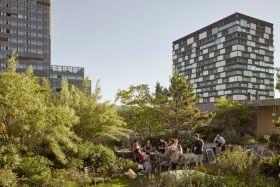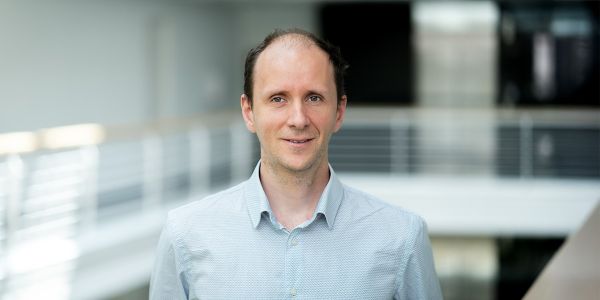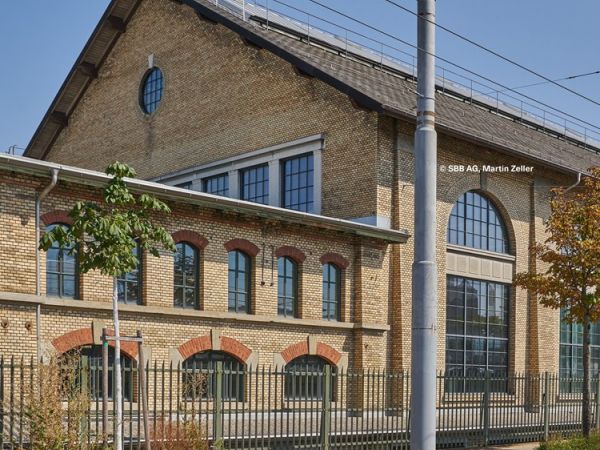
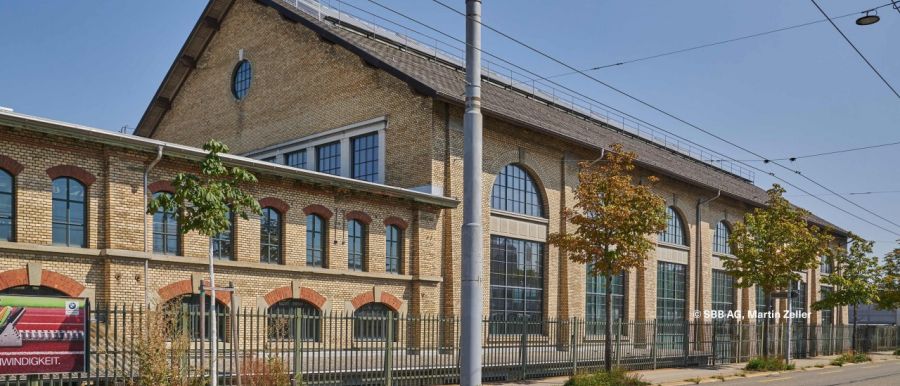
- 10,400 MWh/a heat requirement
- 2,100 MWh/a cooling requirement
- 405 MWh solar power with almost 100 per cent self-consumption
- 100 per cent carbon-neutral
- > 2,100 tonnes of CO₂ saved per year after the transformation
- More than 300 billing meters
A large part of the historic SBB workshops on Hohlstrasse in Zurich is no longer used for railway operations. That’s why, by 2035, SBB wants to gradually transform the 42,000-square-metre site between Zurich main station and Zurich Altstetten into a vibrant urban space and connect it to the adjacent district. Over the next few years, the former SBB workshops are to become a hub for urban production, creative industries and culture, attracting innovative businesses.

Preserving and developing the existing cluster
The site is being developed in close collaboration with the cantonal and municipal authorities for the preservation of historical monuments. The client wants to preserve the character of the existing structures, which are all connected by a uniform use of materials in the form of their yellow brick façades. Two of the historic buildings have already been renovated in recent years, with more to follow. At the heart of the site is the former carriage workshop ‘Building Q’. It is envisaged that this will serve as the shared home to a diverse usage mix, consisting of manufacturing sites, workshops and studios, from 2023 onwards.
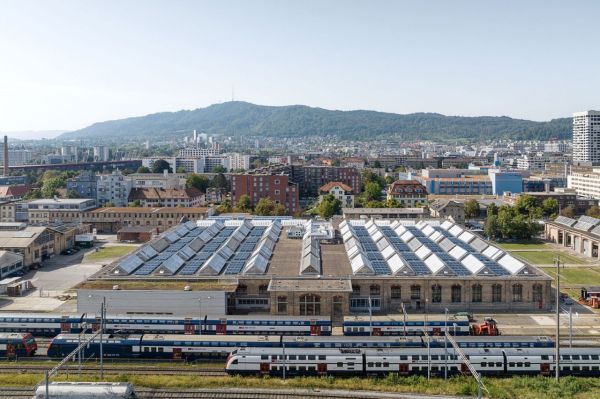
Environmentally friendly construction
‘SBB wants to be climate-neutral by 2030, and climate-compatible construction is an important factor in achieving this objective,’ said Gabriele Bühler, Project Manager at SBB. In accordance with the Masterplan Werkstadt Zürich, sustainable development is pursued at a systematic level with the strategy of ‘consistency, efficiency and sufficiency’. Various climate-friendly construction measures were taken into account during planning. To ensure that the site also maintains its natural ventilation going forward, care will be taken to ensure that the new buildings do not block the currents of cool air. Where possible, the roof water will be allowed to seep into an above-ground system and also serve as cooling. Sealed surfaces that encourage heat build-up and surface run-off are to be unsealed wherever possible. ‘We are also careful with the materials that we choose so that we can avoid excessive heat absorption or storage, to the greatest extent possible,’ explains Gabriele Bühler. Existing cool places will be preserved, supplemented with additional spaces and better connected with each other. Climate-adapted, species-rich and native vegetation not only helps to avoid heat islands, but also ensures the area is a pleasant spot to spend time in. Existing tree groups are retained and new sites are created so that users can benefit from additional or upgraded open spaces. You can also read our white paper ‘Climate-conscious building’.
Save resources and CO₂
The transformation also focuses on keeping the consumption of resources and energy to a minimum. Together, the stakeholders have defined an underlying approach that both treats the area’s historical heritage with respect and also includes a commitment to sustainability, in particular, the circular economy. To deliver on this promise, the transformation pursues a systemic approach. This approach looks at the buildings, or rather, the site throughout their entire life cycle in order to keep CO₂ emissions as low as possible – from construction to operation, through to dismantling. All the buildings and components are recorded on the Madaster platform, which also ensures the circularity of the materials used. The owner and the construction firm responsible for the renovation of the existing buildings on site attach particular importance to reusing building components. For example, disused catenary pylons are used as steel scaffolding in Building Q, a listed structure erected in 1911. They form a 100-metre gallery and divide the interior into three floors. Steel stairs, gratings, beams and lights also get a second lease of life.
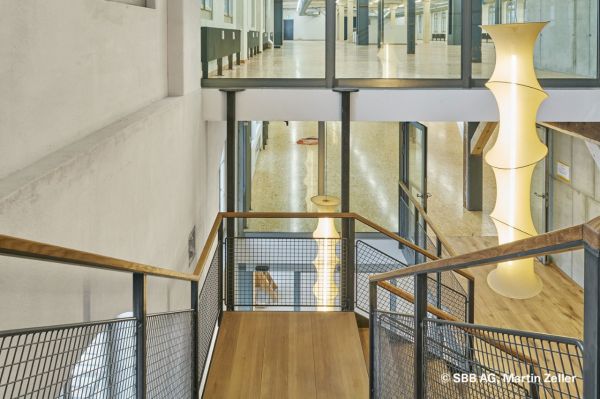
Building X
Strict ecological targets have been established for the new build: CO₂ emissions must not exceed 5 kg per square metre of energy reference area (ERA) per year. For the new construction, Gigon Guyer Partner Architekten are also committed to re‑use, i.e. the reuse of building components. The choice of materials connects with the site’s history and creates a sustainable aesthetic. Specifically: “The steel structural frame will be made from used railway rails, and for the façade glazing we will use window panes reclaimed from decommissioned railway carriages,” explains Markus Siemienik, Head of Eastern Asset Infrastructure at the SBB. Two panes will be combined into box-frame windows that meet energy, building-physics and noise-insulation requirements. The planners are currently assessing which components are suitable for interior fitting out – for instance stairs, handrails, fittings, sanitary appliances or lighting from various re‑use sources. Suggestions are evaluated for feasibility and, if deemed suitable, are selected in consultation with the client.

Energy concept: 100 per cent renewable
We were able to win SBB’s public tender with an energy solution based on 100 per cent renewable energies. Groundwater, which is collected in four wells on the site, serves as a source of heating and cooling. From these wells, the water flows to the energy centres in the larger buildings, which house heat pumps and cooling machines that bring the water to the required temperature.
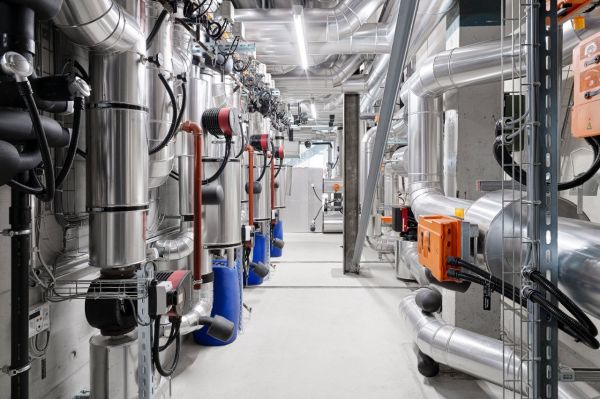
An anergy network connects all the buildings and ensures that excess energy is exchanged between the building groups. For example, excess heat or cold in one building can be used in another. This system also has the advantage of not requiring groundwater boreholes in every building: the smaller buildings are connected to the energy centres via a local heating network. Heating and cooling is generated without any CO₂ emissions, as the rest of the electricity also comes from renewable sources. The use of a monovalent energy system will cut more than 2,100 tonnes of CO₂ per year when fully completed. ewz is also planning, financing, constructing and operating the transformer systems and the medium-voltage lines to supply the site with electrical power.
High self-consumption of solar power
‘Some of the electricity that the people in the Werkstadt use on the site is produced there using photovoltaics,’ explains Markus Fischer, Head of Sales at ewz Energy Solutions. To this end, SBB and ewz want to make the best possible use of the roof areas for solar power production. Both the roof of Building Q, at the centre of the site, and the roofs of other buildings with a suitable structure and orientation for generating solar power are to be kitted out with photovoltaic systems. SBB requires its tenants on the site to form a self-consumption association (ZEV). ‘When completed, the ZEV will consist of around 300 parties that will use locally produced electricity on the site. This allows us to achieve a high self-consumption rate, which, in turn, makes a significant contribution to the cost-effectiveness of the photovoltaic systems,’ says Markus Fischer. He expects self-consumption on the Werkstadt site to be almost 100 per cent when completed.
ewz as a contractor and general contractor for energy
We act as the contractor for the energy supply to the Werkstadt site (in German). The supplier of energy is thus both responsible for planning the energy solution, and also for implementing and operating it over a contract term of 45 years. The financing is provided jointly by SBB and ewz. The range of services also includes individual, consumption-based billing for solar power as part of the ZEV. For the owner, this form of collaboration has various benefits, including keeping financial risks and management costs very low. If a system fails, the team at ewz makes sure it gets back into operation as quickly as possible. To ensure that the system can be operated efficiently, we will start undertaking energy-related operational optimisations shortly after commissioning. As part of an ongoing process, the systems will be optimised and adapted to the actual needs relating to their use. By extension, this ensures that they consume as little energy as possible, generate minimal costs and offer maximum convenience for users. A fossil-free energy supply not only aligns with SBB’s sustainability strategy: it also pays off financially for the owner and tenants.
